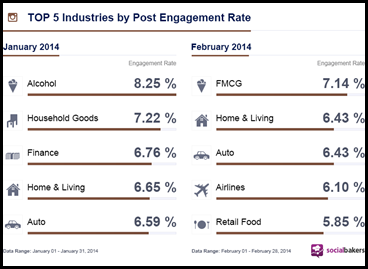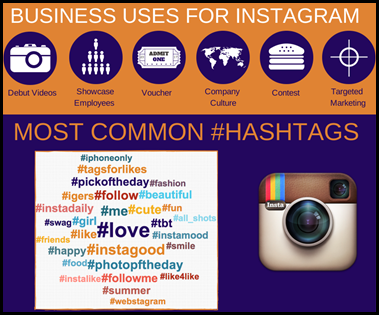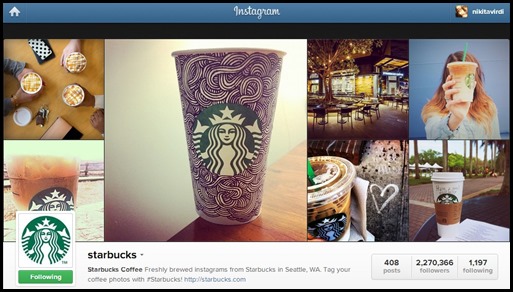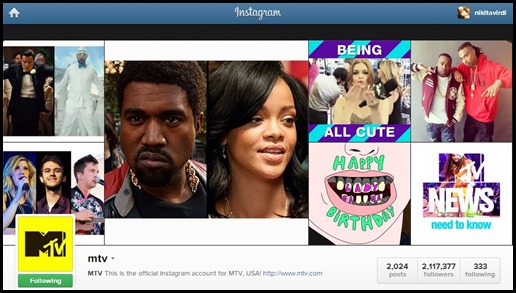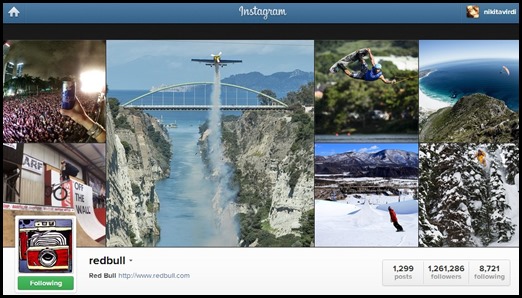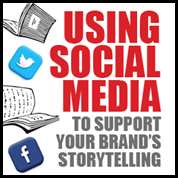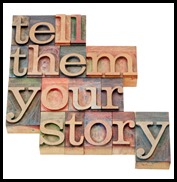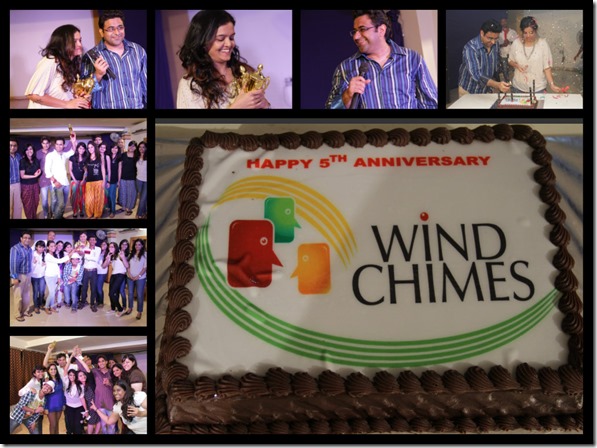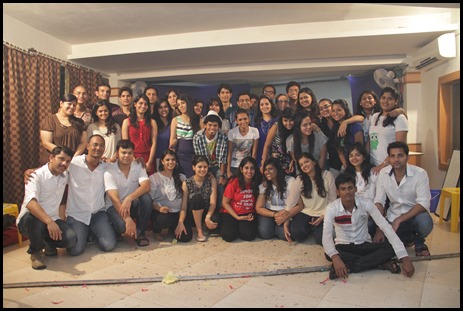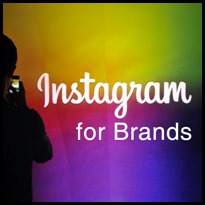 Just like other social networks, brand managers and marketers have shown interest in Instagram too. The simple fact being that, Instagram can also help humanize your business and increase engagement for your brand. Businesses and brands are already capitalizing on this powerful medium. Instagram is highly interactive with a very high engagement rate as users are also active on the go. It allows you to showcase creative content to your customers who can in turn be powerful tools to build brand advocates as images shared on Instagram connect more creatively depicting the brand style and personality.
Just like other social networks, brand managers and marketers have shown interest in Instagram too. The simple fact being that, Instagram can also help humanize your business and increase engagement for your brand. Businesses and brands are already capitalizing on this powerful medium. Instagram is highly interactive with a very high engagement rate as users are also active on the go. It allows you to showcase creative content to your customers who can in turn be powerful tools to build brand advocates as images shared on Instagram connect more creatively depicting the brand style and personality.
Nowadays, brands are gradually looking up to Instagram for increased engagement with their customers. They are invigorating a sense of excitement and visual treat for them. In fact, Instagram is slowly becoming one of the larger elements of a brand’s marketing mix. This can also be considered as the result of the rise of visual content progressively becoming popular amongst the masses.
What you as a brand or business can do on Instagram?
- Firstly, have a plan!
– You can hold an employee Instagram photo contest - – Create your company’s Instagram account & share unique photos
- – You can share these photos on Facebook and Twitter
- – You can also spread awareness by encouraging customers to take photos of your product or service
Instagram is really good for your Business! You can:
 Promote your products through images and put your message across effectively
Promote your products through images and put your message across effectively
Engage with your followers as customer engagement is very important- Competitions and giveaways for those who follow you can be a means of showing some appreciation to your loyal followers
Behind the scenes pictures of your organization can be shared as people are curious about them - Hashtags can be very useful in showing that who is using your products and also promote your brand
Not all industries have joined the Instagram bandwagon. But, according to Socialbakers’ latest Instagram performance report, FMCGs and Home goods are leading, followed by alcohol brands which produced the most engagement on Instagram in January, but a drop was witnessed in February. Have a look below:
Socialbakers, in its report, also mentioned two other brands active on Instagram and climbing the engagement ladder, General Electric and National Geographic.
General Electric (GE) invited six fans and influencers to come up with a marketing campaign and National Geographic plunges into the high-quality photography from the magazine, giving Instagram followers a magnificent look through the lenses of the magazine’s photographers.
For brands to be on Instagram, its not just about being there, but a lot depends on how close you are to your following and what is the interaction rate of your brand with your audience followed by how much you make them a part of whatever you are doing. Here’s something you can follow:
There are a few reasons and tips on why your brand should be on Instagram as mentioned below:
It is easy to find targeted users using keywords. You can search the targeted hashtags and engage with the users who posted it.
It is easy to communicate with your followers as you can mention any user that you follow and they will see it. For example you want to thank your most engaging users on Instagram and give them a 50% discount code of any product in your online store. You can just post it as a picture and mention targeted users using @ (at) sign in the comment section: @username
You can make beautiful marketing messages as pictures. You can share your products, promotions or blog posts through pictures. Few things you should keep in mind are:
- – Don’t post pictures ONLY about your company
- – Be creative
- – Engage users with every picture by asking questions
- – Reply to all comments with @username sign
- – Use as many hashtags with targeted #keywords as possible in the caption to a picture
Source: newmediaforce.com
How much engagement are top brands getting on Instagram?
– Instagram says it has 90 million active users
– Top 3 brands on Instagram are NIKE, MTV and Starbuck
– 23% of active Interbrand 100 companies post more than 50 times a month
– Brands are seeing more than 5600 engagements per photo
– 98% of Instagram photos posted by brands are shared to Facebook
– More than 2 million likes, comments and shares of Instagram photos have occurred on Facebook since the network bought Instagram
Source: wishpond
Brands need to set one goal in mind when on Instagram, that is, creating loyal customers who are genuinely interested in your brand. By using Instagram, brands and organizations are able to shift perceptions by showing different aspects of the brand, it tells your brand story in a different way!
You might be wondering how images and short videos can work wonders for brands, but think about the lasting impression it creates on the minds of is audiences. With Instagram, brands can showcase their culture, special, offices, new products, events and the faces of the wonderful employees who make it all happen.
Another great thing we can’t ignore is networking. Brands can connect to people and other brands on Instagram through images and engagement. Following back your followers and interaction with them associated with hashtags can help brands reach out to their specific target audiences. Keeping the interests of audiences intact through interesting promotions and not direct selling is very important. Ignoring this fact may lead to an unfollow chain.
Here’s an Instagram secret recipe that might help!
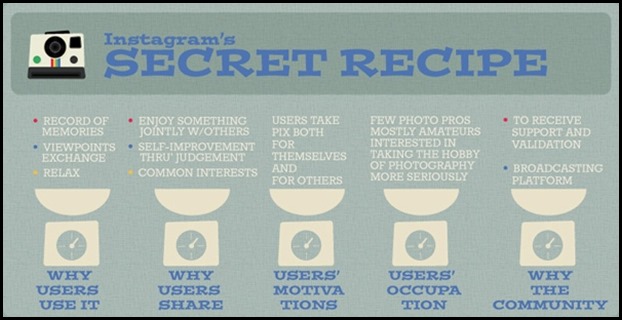
Source: Techcrunch, Followgram
Few examples on how brands leveraged Instagram
1) See how FOREVER 21 got to 1.4 million followers on Instagram in this Infographic
2) Starbucks leverages filters and hashtag functionality to connect followers with the products. Artsy product shots, promotions and discounts are all shared exclusively via Instagram.
3) MTV is a content machine. It utilizes Instagram to drive viewership by showcasing elusive celebrity photos and important announcements
4) No engagement tactic is left unused on the Red Bull photo stream. The brand initiated promoting athletes, events and sparking relevant brand conversations with hashtags.
What brands need to do is, take advantage of the fact that there are a lot of brilliant people out there who create powerful visual content and learn a lot from them. Are you an Instagram fan? What do you think about this powerful visual marketing element? How do you think will brands explore its complete potential? Well that remains an interesting thing to watch out for in the times to come!

